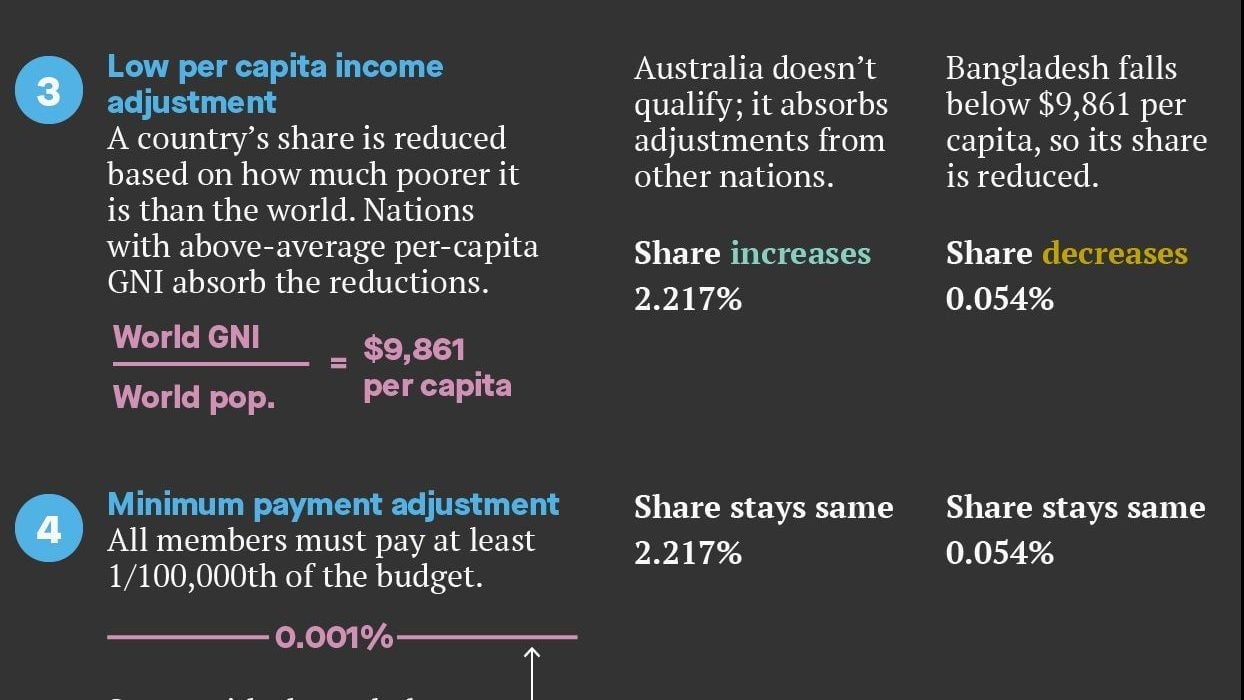This is the complicated, convoluted, and controversial formula that determines who pays what to the UN
The US pays 22% of the United Nations’s operating budget, 28% of its peacekeeping budget, and makes sure the world knows how unhappy it is about that.


The US pays 22% of the United Nations’s operating budget, 28% of its peacekeeping budget, and makes sure the world knows how unhappy it is about that.
As the largest donor to both funds, it’s common to hear American officials (including the president) object to the US’s burden in financing the UN. Paying into these two budgets is mandatory; all member states are legally required to make their assessed payments towards both.
The US’s $2.5 billion annual contribution to the peacekeeping budget is often in American politicians’ political cross hairs. Earlier this year, US ambassador to the UN Nikki Haley stressed that the United States should not be required to pay more than 25% of the peacekeeping budget.
The assessment rates for the peacekeeping budget are up for discussion during the 2018-19 UN session.
The equation at the center of the controversy
Understanding the formula for determining UN assessment rates requires nothing more than high-school level math and a very basic understanding of global economics. In brief, the UN considers gross national income, population, and debt burden in determining the percentage of the total budget each member state must pay to fund general UN operations. That budget is known as the “regular budget.”
The formula for funding peacekeeping
The UN’s peacekeeping program (DPKO) is also funded through an assessed budget. It’s based on the equation for the regular budget (illustrated above), but there are a few key adjustments.
The permanent members of the Security Council—China, France, Russia, UK and US—are responsible for covering a higher share of the budget. Additionally, special consideration is given to reducing payments from countries that are in the midst of a crisis requiring peacekeeping operations.
Member states are assigned categories based on their per capita GNI. The lower a country’s per capita GNI, the greater discount the country receives on its share of the peacekeeping budget.
But is it fair?
The question of fairness can be approached by various perspectives, and a conclusion tends to depend on for whom? On one hand, the United States has the highest assessment rates, and thus it contributes the most in absolute dollars. On the other, the country doesn’t come out anywhere near the top by using other measures.
On a per-capita basis of total UN spending (which includes voluntary and assessed payments) the US places after many other nations, including all the nordic countries.
Comparing a country’s assessment rates to its share of the global income is another way to consider the fairness of payments. Most states—and especially rich nations—end up contributing more to the regular and peacekeeping budgets than their share of the global GNI. The United States and China are interesting exceptions.
The United States pays more than double what the next largest country pays into either budgets. It’s also the only country whose payment is capped by the ceiling in the regular-budget formula, so it’s getting a deal.